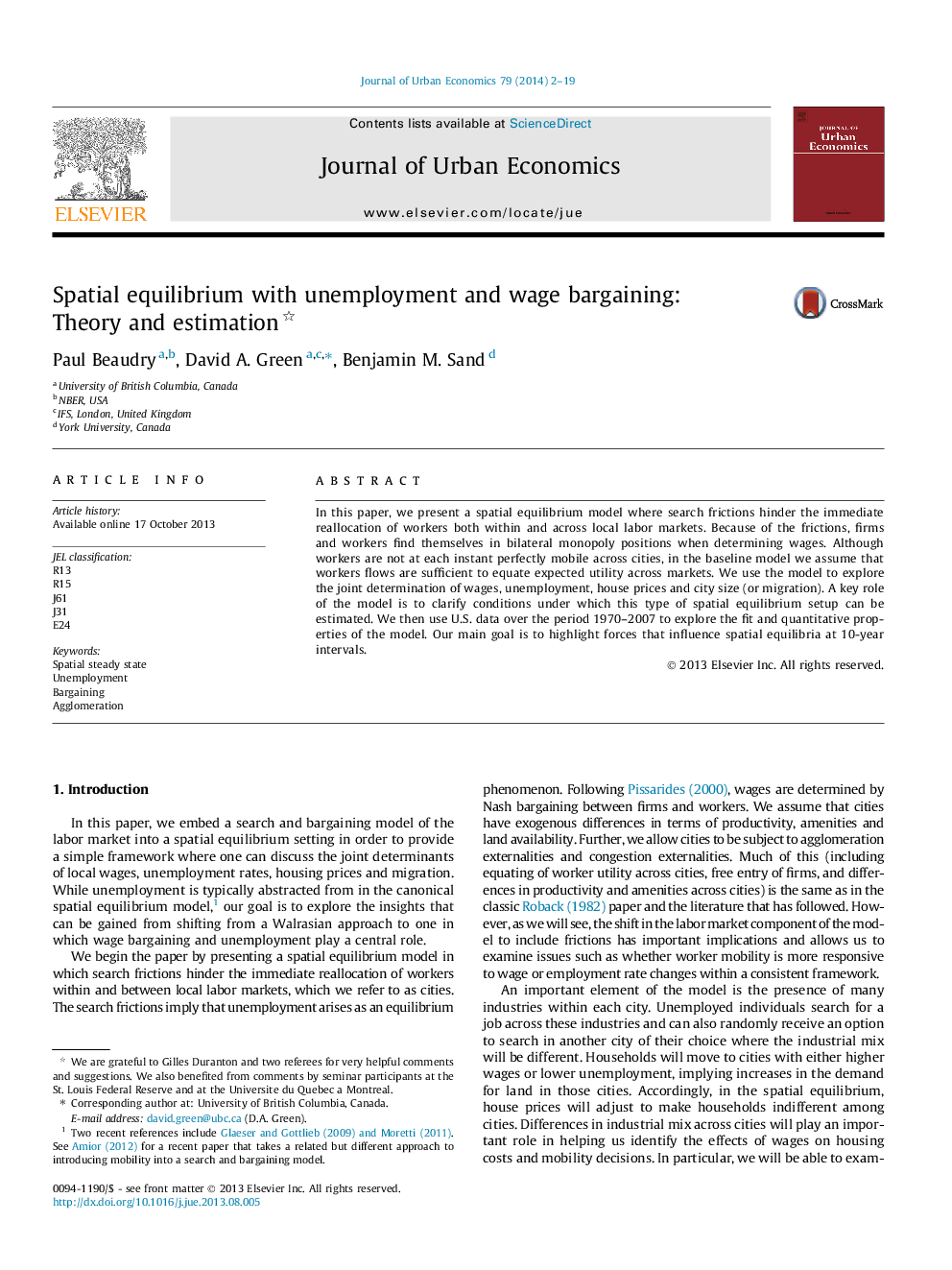| Article ID | Journal | Published Year | Pages | File Type |
|---|---|---|---|---|
| 971189 | Journal of Urban Economics | 2014 | 18 Pages |
In this paper, we present a spatial equilibrium model where search frictions hinder the immediate reallocation of workers both within and across local labor markets. Because of the frictions, firms and workers find themselves in bilateral monopoly positions when determining wages. Although workers are not at each instant perfectly mobile across cities, in the baseline model we assume that workers flows are sufficient to equate expected utility across markets. We use the model to explore the joint determination of wages, unemployment, house prices and city size (or migration). A key role of the model is to clarify conditions under which this type of spatial equilibrium setup can be estimated. We then use U.S. data over the period 1970–2007 to explore the fit and quantitative properties of the model. Our main goal is to highlight forces that influence spatial equilibria at 10-year intervals.
